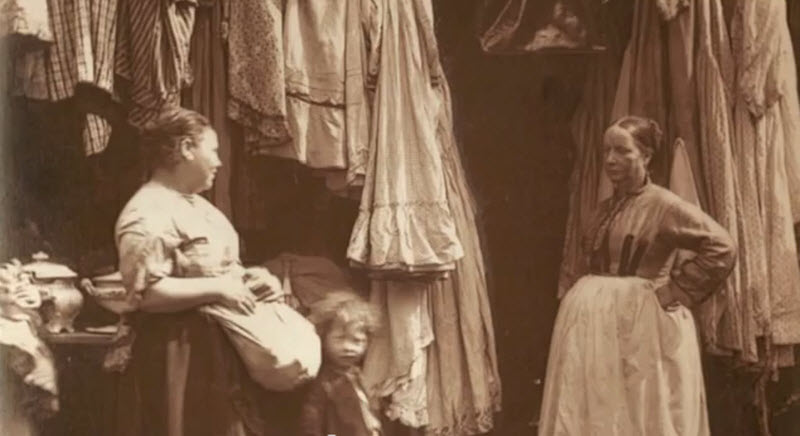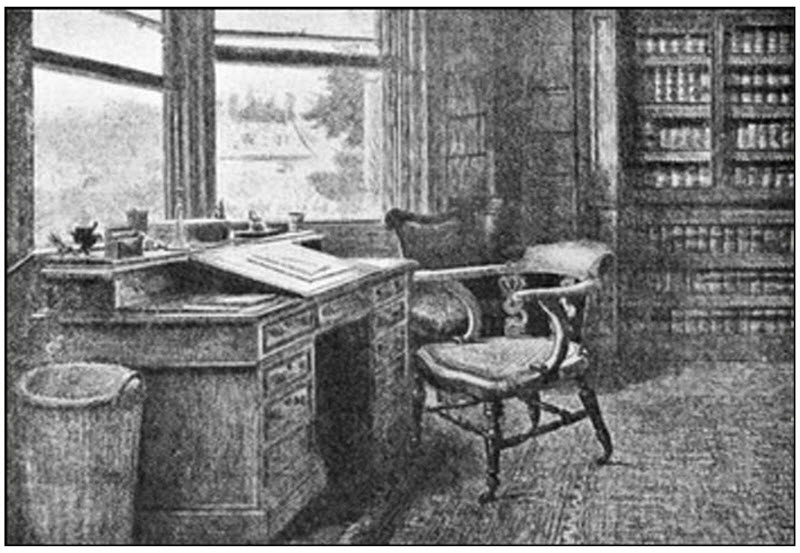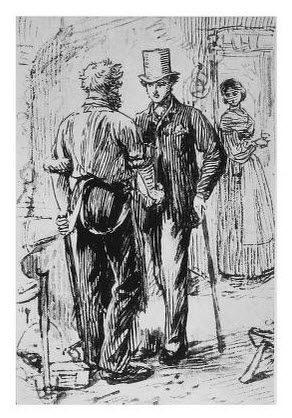Charles Dickens: Life and Times
Charles Dickens survived a hardscrabble childhood to become one of the greatest authors in the English language. But he could never put the misery of his early years behind him, and it would have a lifelong effect on his life and writing.

Charles Dickens as Young Man - Age 18
In some ways, Charles Dickens life -- a poor neglected boy who rises to the height of financial and professional respect -- sounds like fiction, and could be a Dickens novel in itself. Indeed Charles Dickens was to draw much of his views and inspiration from his early years. Many of his books contain fictionalized autobiographical accounts of his own self, and of his experiences.
Born on February 7, 1812, Dickens was the second of eight children. Their father, a minor clerk in the naval administration, struggled to make ends meet and wound up in debt. In those harsh days of the Victorian Era, the father and his entire family were imprisoned from nonpayment of debt and young Dickens found himself sharing a small cell with his family in the Marshalsea Prison. As harsh as these surroundings were, Dickens life was to soon get even worse.
His family decided that young Charles Dickens, needed to help support himself and his hard luck family. So at 9 years old they sent him to live and work on his own. Dickens worked in one of the many sweat shops that were common in Victorian Britain at the time. His job was to glue labels to bottles of shoe polish. After very long days, Dickens would walk on his own back to an apartment where he lived completely alone and without supervision. There was no one to cook meals for him, to wash his clothes, or to provide any emotional warmth and guidance. Dickens only contact with his parents was on Sundays, when he would go to the prison to visit his mother and father.

Victorian Era Street Life
The idea that a 9 year old boy could be sent out to fend for himself in the hard crime infested neighborhoods of lower class London seems incredible to modern readers. But in those days there were no social safety nets, and no laws or social norms to protect children from such abuses. In fact there were no laws setting a minimum age for child labourers and it was common place for little children to work 12 or more hours a day in dangerous industrial environments such as mines or factories.
As an adult, Dickens was ashamed of his miserable childhood and he would never speak of these times openly but many of his novels deal sympathetically with the plight of street urchins, prostitutes and other people on the margins of society. In fact Dickens books would help change attitudes and bring about improvements in orphanages, poor houses and factories.
In these impoverished circumstances there was no time or money for school, and Dickens went completely uneducated. His only formal education had taken place before his family fell into financial trouble. A few later, his father was finally released from jail and his family once again took in Dickens who was by then 12 or 13. He was once again enrolled in school where excelled and became an avid reader. But his family once again fell into poverty and they could not afford his tuition, so Dickens was withdrawn from school. His formal education ended when he was in his early teens, and all together Dickens only had a few years of schooling.

Dickens Writing Desk
Once again his family had to figure out what to do with young Dickens as they could not afford to feed him. This time it was decided to send Dickens to a lawyer's office. This was not a great improvement over working in a sweat shop factory. Dickens and other young boys like him were employed as copyists, in circumstances reminiscent of medieval monks copying manuscripts. Their job was to make copies of legal documents by hand with a quill pen. They worked long hours in poor lighting conditions.
Dickens hated his work in the law office very much, and his satirical denunciation of the British system in his novel Bleak House may have been born from what he experienced there.

An Illustration from Great Expectations
Aspiring to a better life, Dickens set his sights on becoming a reporter. He taught himself shorthand (an indispensable skill for taking notes ) and visited the British museum library daily to improve his education. At 17, Dickens found work as a freelance reporter. His work as a reporter would bring him into contact with all kinds and classes of people, and was to prove a fertile nursery for the development of many of Dickens' most memorable characters such as Miss Havisham and Ebenezer Scrooge.
However Dickens continued to struggle financially. Writing assignments were few and the newspapers paid little for what they did publish. It was not until Dickens was 22 years old that he found permanent employment as a reporter at a newspaper and later a magazine. He also began contributing original works of fiction to the magazine.
In December 1833 the Monthly Magazine published Dickens' first original work, called "A Dinner at Poplar Walk." Other articles followed, but at first Dickens did not receive any payment because the magazine could not afford to pay anything.
Dickens articles proved popular, however, and led another magazine, The Evening Chronicle, to hire Dickens as a reporter, and contributing writer. At the age of 23, Dickens was now earning a good income as a reporter and magazine writer. His articles included vivid descriptions of daily British life and characters. These sketches were later collected and published, in book form under the title "Sketches by Boz" (Boz being Dicken's pseudonym, derived from his childhood nickname "Moses").
Sketches by Boz proved to be a huge commercial success and was the beginning of a literary career that spanned over twenty years and produce numerous books that have become classics, such as A Tale of Two Cities, Oliver Twist and A Christmas Carol.
Although Dickens achieved his first career success when he was only 23, he had been working fulltime since he was 9 years old!
Dickens career was one of success after success. His books were best sellers at the time, and he was respected and admired by critics and colleagues. Over 100 years after his death, Dickens continues to be popular. Every one of his books remains in print and many have been adapted as movies and miniseries. A Christmas Carol has become a mainstay of Christmas television programming, and is credited with helping to establish many of the Christmas traditions that we follow today. Most of his contemporary Victorian authors are now forgotten and unread, but his books continue to be widely read even today.

Charles Dickens in Later Life, 1858
In addition to his success as a writer, Dickens enjoyed popularity as a lecturer and even traveled to America on a speaking tour.
Dickens's personal life was not as successful as his literary career. In 1836 Dickens married Catherine Hogarth, the daughter for his friend and editor George Hogarth. The couple would have ten children together, but their marriage ended in a rancorous separation that split the children between them and damaged his reputation due to allegations of infidelity. Some commentators have remarked that it is ironic that Dickens wrote sentimentally about home life and family relations, but his own life was far from idyllic. Dickens' relationship with his wife was unhappy and his relationship with his children ranged from neglectful to stifling over indulgence. His inability to create a healthy family relationship may have been caused by his own emotionally stunted childhood.
Rumours circulated that Dickens had separated from his wife because he was unfaithful. He denied it, but it is well known that Dickens formed a lasting relationship with an actress named Ellen Ternan, though it is not clear whether this liaison began before his split with Catherine. Some rumours even suggested that he was having an incestuous relationship with his sister in law. The separation caused a sensational scandal in Victorian England and was amplified by Dickens celebrity status.
As was common in the literary market of the time, Dickens novels were serialized and appeared in installments in magazines before being published in book form. Dickens would write each novel 's installments in time for the next issue of the magazine. This method allowed Dickens to use the audience reaction to shape the novel as it was written, emphasizing popular characters and changing plot lines to suit public taste. However the serialization method also put a great deal of stress on the writer to keep to schedule in order to meet publication deadlines. However the only time he missed a deadline was when his wife's 17 year old sister, whith whom was in love died, sending Dickens into a depression. His prodigious literary output is remarkable considering that each draft had to be written and corrected by hand and then submitted for typesetting. The typesetting process was done laboriously by hand using moveable type pieces.
Dickens was working on The Mystery of Edwin Drood when he died of a stroke on June 9, 1870, leaving his final novel unfinished. He was only 58 years old. He is buried in Poet's Corner in Wesminster Abbey, among such greats as Geoffrey Chaucer.

